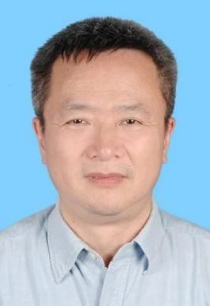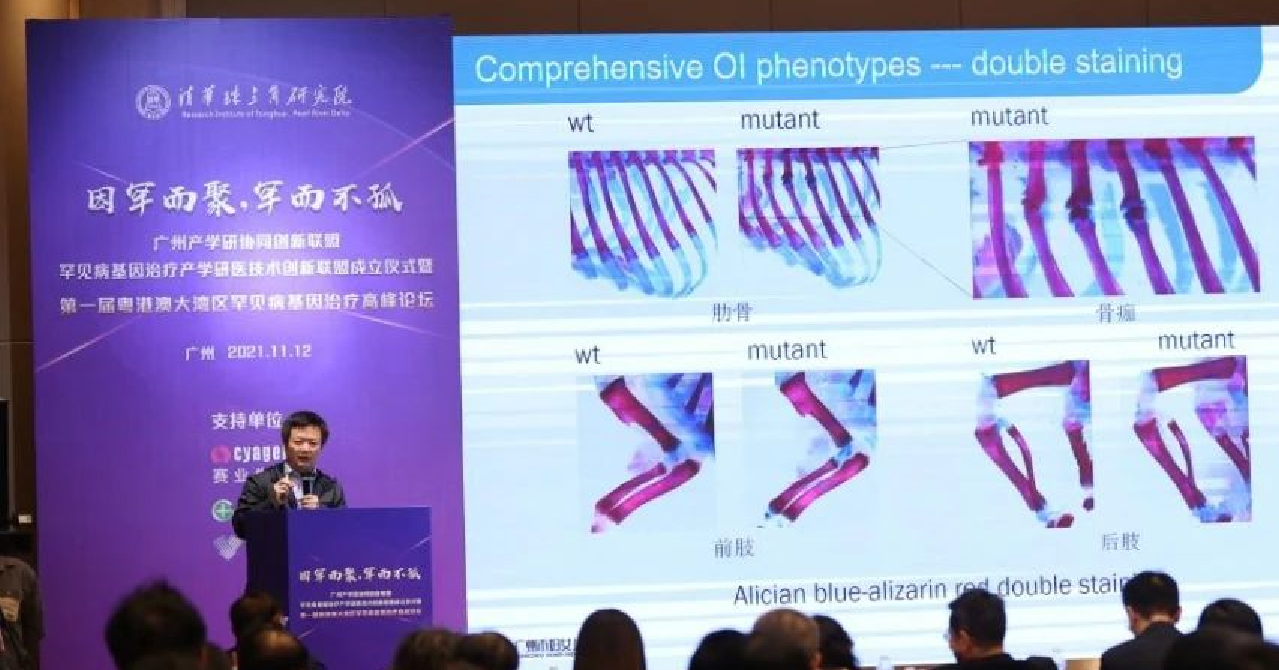Professor Yaping Tang: Advancing Rare Disease Research Through Collaboration and Innovation
The challenge of rare diseases has consistently posed complex problems to the medical community. With their low incidence but vast diversity, diagnosing and treating such diseases become particularly intricate. China's approach to rare diseases, especially in areas like rehabilitation and research, is still developing, which can leave many patients struggling to find adequate medical support.
Recognizing this, the "A Rare Journey Together" initiative has invited Professor Yaping Tang, Executive Director of the Pediatric Research Institute at Guangzhou Women and Children's Medical Center, to impart his extensive knowledge and insights on rare disease research. His expertise provides invaluable guidance for both patients and healthcare professionals.
Figure 1: Professor Tang Yaping
Currently heading the Pediatric Research Institute at Guangzhou Women and Children’s Medical Center and leading the Neurodevelopmental and Behavioral Genetics Laboratory, Professor Tang has a long-standing commitment to behavioral genetics research. His work at the Center pivots around translational medical research into rare diseases, leveraging his background in genetics. His research methodology involves screening for genes associated with rare diseases and using model animals to understand their roles, aiming to devise novel diagnostic or therapeutic strategies. With over 60 published papers in esteemed journals like Nature, Science, and Cell, his research was once acknowledged by Time Magazine as one of the “Top 10 Medical Breakthroughs of the Year.”
Guangzhou Medical Center: Leading in Pediatric Rare Disease Research
Nationally recognized for its groundbreaking work on pediatric rare diseases, the Pediatric Research Institute, under the stewardship of Professor Tang, focuses on innovative treatments and methodologies. Professor Tang's return to China in 2015 marked the establishment of this institute, bringing global academic leaders together to tackle pediatric diseases.
Professor Tang vividly recalls a poignant case of a young girl with osteogenesis imperfecta, who despite multiple surgeries, experienced frequent fractures. This case pushed his team to delve deeper, leading them to discover a genetic mutation impacting bone mineralization. Their findings, still under further research, underscore the significance of foundational studies in offering promising treatments.
Figure 2: Professor Tang Yaping shares research progress on osteogenesis imperfecta
Rare Diseases in China: Current Landscape and Challenges
Opening the discussion on China's rare disease framework, Professor Tang highlighted the newly introduced "2021 Version Definition of Rare Diseases in China". Unlike definitions in Europe and the US, China's criteria focus on a disease incidence of less than 1/10,000 in newborns and fewer than 140,000 total patients. This definition, influenced by China’s economic context and policy infrastructure, aligns with national circumstances and objectives.
China's current challenges in rare disease diagnosis and treatment encompass limited diagnostic proficiency, high misdiagnosis rates, and inadequate access to medical resources and treatments. Professor Tang cites the struggles of patients in remote regions, who without access to major medical hubs, face potential misdiagnoses or protracted wait times for a confirmed diagnosis. Furthermore, post-diagnosis, the lack of available treatments can be demoralizing.
Emphasizing the importance of early intervention, Professor Tang recommends expansive screening for high-incidence rare diseases in China, such as thalassemia. However, for diseases with unidentified or multiple genetic causes, widespread population screening isn't feasible due to unclear pathogenesis and high costs. He suggests that prospective parents seek preconception counseling, and pregnant women undergo specific tests during pregnancy, to minimize the risk of congenital rare diseases.
Enhancing Access to Orphan Drugs for Rare Diseases in China
Orphan Drug Landscape:
Recent policies in China have significantly expanded the development and accessibility of orphan drugs for rare diseases, leading to an increased interest from pharmaceutical companies in this niche. In 2018, the National Health Commission released the "First List of Rare Diseases" with 121 conditions. This list is expected to grow, potentially encompassing 200 diseases. As of February 2023, 199 approved drugs for 87 rare diseases have been recognized worldwide, with China having authorized 103 of these for 47 diseases.
Challenges in Medical Insurance:
While there's progress in drug development and approvals, the establishment of supportive medical insurance for patients with rare diseases lags behind. Professor Yaping Tang highlights the critical financial burden on families post-diagnosis, emphasizing that beyond drug approvals, affordable access to these treatments is essential. He praises the positive shift in China's orphan drug landscape: from a phase of "no drugs available" to "option of drugs," and now "insured drugs." Currently, 73 of these drugs are included in China's medical insurance, covering 31 rare diseases, resulting in over 70% of approved orphan drugs being insured.
Progress in Drug Import Policies:
November 2022 saw a collaboration between the Ministry of Finance, the General Administration of Customs, the State Taxation Administration, and the National Medical Products Administration. Together, they issued a notice highlighting the third set of orphan drugs qualifying for value-added tax policies, providing favorable conditions for the import of these medicines and thereby reducing costs for patients.
Boosting Domestic Orphan Drugs:
Recent regulations from the Center for Drug Evaluation of the National Medical Products Administration aim to encourage the research, development, and swift approval of new orphan drugs in China. Professor Tang believes this move will greatly motivate local pharmaceutical companies to invest in the orphan drug sector, given the inherent high costs and risks associated with it.
Promoting Rare Disease Research:
Professor Tang suggests the implementation of innovative incentive policies to boost rare disease research. Collaboration between local authorities, academic institutions, and industries is paramount. With strong financial backing, as seen in February 2023 where 19 gene therapy companies secured funding, rapid research and innovation are feasible. Additionally, fostering open communication and resource-sharing among researchers, clinicians, and developers can accelerate the translation of scientific discoveries into practical treatments. There's also a call for policies that streamline the often lengthy clinical trial processes for orphan drugs.
Encouraging Research in Rare Diseases and Facilitating the Application of Discoveries
"Scientific research is paramount for both prevention and treatment of rare diseases, setting the foundation for transforming these research outcomes into practical applications," commented Professor Yaping Tang. He emphasized the need for the government to design innovative and bold incentives for rare disease research. Local agencies and institutions should back these initiatives, fostering an environment where researchers from universities, research institutes, and corporations passionately delve into rare disease research in China.
The role of social capital can't be overstated. Remarkably, in just February 2023, 19 pioneering gene therapy firms in China secured funding, a portion of which undoubtedly was reinvested in research and development.
For swifter translation of research into practical solutions benefiting rare disease patients, Professor Tang suggests fostering a collaborative ecosystem. This would involve researchers, clinicians, and industry professionals sharing resources and insights openly. Additionally, the clinical trial phase could be expedited if policies exempting certain trials are implemented. "Given the rarity of some conditions, many hospitals struggle to find enough qualifying patients for clinical trials. This can greatly prolong the trial phase, often making institutions hesitant to even participate, further delaying the introduction of innovative treatments," explained Tang. Establishing an innovation-driven, efficient environment for rare disease research would not only retain crucial talent but also draw more researchers to this vital field.
For real-world applications of research findings, scientists need to identify tangible 'breakthroughs'. "A genuine breakthrough goes beyond just identifying a causative gene or understanding disease mechanisms. It's about discovering actionable, effective, and feasible strategies that transform foundational research into real-world solutions," Professor Tang added.
Creating Rare Disease Databases for Improved Drug Research
"Gene therapy, a promising avenue that introduces or amends faulty genes in patients, offers an innovative approach to disease management. Considering that 80% of rare diseases result from single gene mutations, theoretically, gene therapy could address 80% of these conditions," explained Professor Yaping Tang. He highlighted successful gene therapies like BioMarin's AAV for adult severe hemophilia A, and Novartis' Zolgensma for spinal muscular atrophy – which received FDA approval in 2019 and amassed sales of $1.351 billion by 2021. By the close of 2022, the global market had approved 45 gene therapies, with China showing significant momentum in viral vector-based gene therapy research, recording nearly 40 IND approvals.
However, the gene therapy domain is still nascent, prompting debates about its efficacy and safety. While the potential therapeutic benefits are significant, challenges, including the high costs, remain. Issues around delivery efficiency, avoiding side effects such as immunogenicity, gene mutation, and other biological complications need to be addressed. Professor Tang is optimistic, though: "The journey might be challenging, but the future holds immense promise. Gene therapy might eventually be humanity's ultimate weapon against diseases."
To enhance rare disease management in China and boost drug development, including gene therapies, the National Health Commission has pioneered the establishment of the Rare Disease Diagnosis and Treatment Collaboration Network. This initiative aims to leverage top-tier medical resources, elevating China's ability to diagnose, treat, and manage rare diseases effectively.
Guided by these national endeavors, Professor Tang underscored the urgency to bridge information gaps by building comprehensive rare disease databases. Such databases should feature expert management, an abundance of patient data, organized medical records, advanced information systems, multi-source data inputs, viable treatment strategies, and the capacity for compliant resource sharing. "This would serve as an invaluable asset not only for policymakers, researchers, clinicians, and industry players but also for patients. It's an enduring legacy for upcoming generations," Tang concluded.
"Walking Together on the Rare Disease Road"
"Walking Together on the Rare Disease Road" interview program is jointly produced by the Guangzhou Rare Disease Gene Therapy Alliance, Southern Medical Network, and Early Screening Network. The program invites authoritative experts, researchers, entrepreneurs, and others in the field of rare diseases to conduct interviews on various aspects of the latest research, technological progress, clinical prevention and treatment, and other aspects of rare diseases. The program provides popular science knowledge and cutting-edge information related to rare diseases for industry professionals and researchers, which helps to promote the diagnosis and treatment of rare diseases.

